As members of The CR celebrate the annual Winter Harvest and end of year festivities, we’re spending this week closing out 2014 by recapping the best new games released for each of the gamer archetypes. We announced the overall winners in our podcast, but here we look at the final five choices for each group.
 From the depths of a cavernous dungeon, to the cold reaches of a distant conflict in outer space, to the exploration of the human condition, Immerionists thrive on a game’s setting. This group gets its biggest enjoyment out of games with rich settings that either tell some kind of story or serve some kind of purpose – games that exist solely on basic mechanical or tactical choices are their kryptonite. Indeed, their driving interest in a game revolves more around whether a particular mechanic or component fits whatever narrative is being told than if it is the most ideal option on the board. Immersionists want to be part of the game and feel as if their character belongs in its setting. These roleplayers and worldbuilders demand that flavor actually matter to a game if it’s to hold their interest – something that more designers have been taking to heart in recent years.
From the depths of a cavernous dungeon, to the cold reaches of a distant conflict in outer space, to the exploration of the human condition, Immerionists thrive on a game’s setting. This group gets its biggest enjoyment out of games with rich settings that either tell some kind of story or serve some kind of purpose – games that exist solely on basic mechanical or tactical choices are their kryptonite. Indeed, their driving interest in a game revolves more around whether a particular mechanic or component fits whatever narrative is being told than if it is the most ideal option on the board. Immersionists want to be part of the game and feel as if their character belongs in its setting. These roleplayers and worldbuilders demand that flavor actually matter to a game if it’s to hold their interest – something that more designers have been taking to heart in recent years.
And with that, here are the top five games of 2014 for Immersionists:
#5. Legendary Encounters
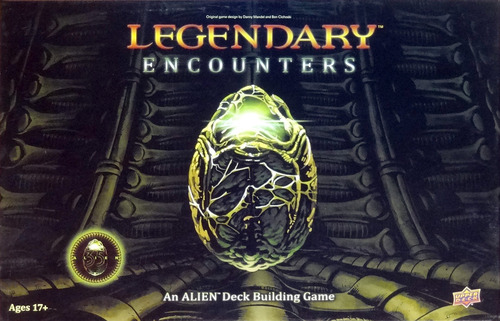 You know what’s a terrible prospect? Playing a seemingly cooperative game near to completion only to discover that you’ve had a traitor in your midst whom you never saw it coming. Granted, the hidden traitor mechanic is nothing new, but at least it’s something players generally know about and can prepare for. However, when a freshly birthed Xenomorph unexpectedly explodes out of what’s left of your teammate’s chest cavity and then proceeds to hunt the rest of your team down, it can actually be a harrowing ordeal. But that’s the risk you take with Legendary Encounters.
You know what’s a terrible prospect? Playing a seemingly cooperative game near to completion only to discover that you’ve had a traitor in your midst whom you never saw it coming. Granted, the hidden traitor mechanic is nothing new, but at least it’s something players generally know about and can prepare for. However, when a freshly birthed Xenomorph unexpectedly explodes out of what’s left of your teammate’s chest cavity and then proceeds to hunt the rest of your team down, it can actually be a harrowing ordeal. But that’s the risk you take with Legendary Encounters.
This is largely a retheming of the Marvel Legendary deckbuilding game, except it’s set in the world of the Alien movie franchise. Players portray known characters like Ripley or Bishop as they must work together to defeat the aliens, and, if possible, survive to tell the tale. Immersionists will especially appreciate this game, as it really does the theme justice by often keeping players on edge. Legendary Encounters is a dark, brooding game, with potential danger lurking in any corridor. Bad things are going to happen to your team,
And yes, just like in the movies, you can actually die and become the very aliens you were hunting.
#4. The Battle At Kemble’s Cascade
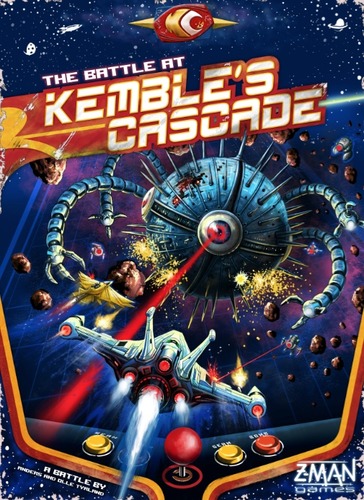 Pew pew! Fire teh lazors!
Pew pew! Fire teh lazors!
Beyond it simply being a game where players fly starships all over the place to complete for fame and fortune, The Battle at Kemble’s Cascade succeeds at being a novel idea. If for nothing else, Kemble’s Cascade helps mine the collective childhood nostalgia of many adult gamers, hearkening back to the time of early console and arcade games. Board games in recent years have seen a number of retro game iterations, from pixelated characters to those that mimic side-scrolling video games.
This game changes the trajectory of that idea – literally – by implementing the idea of a vertical scrolling game instead, where the map is continually moving alongside the players. The layout is controlled by a series of tile columns which are added at the top and removed from the bottom as the game progresses, decently depicting the sensation of those classic starfighter games. Your goal is twofold: avoid the incoming laser fire from both enemy craft as well as other players…and shoot back with wild abandon. Because, really, that’s what you did in those games, and the more you can blow up, the more fun it is. It’s a healthy bit of nostalgia mixed with some fun flavor, and Immersionists can certainly get on board with that.
#3. Star Wars: Imperial Assault
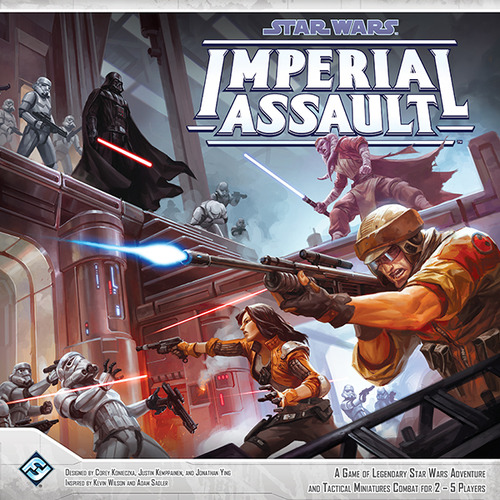 When the Rebels blew up the Death Star at the Battle of Yavin, who knew that the Empire wouldn’t take that affront lying down? Star Wars: Imperial Assault dumps players right into a series of tactical but thematic scenarios taking place soon afterwards. Or, smack dab in the middle of the Galactic Civil War. Imperial Assault allows you to decide from a variety of stories and skirmishes to play out, with one side controlling the seemingly insurmountable Imperial forces and the other being the scrappy Rebel Alliance.
When the Rebels blew up the Death Star at the Battle of Yavin, who knew that the Empire wouldn’t take that affront lying down? Star Wars: Imperial Assault dumps players right into a series of tactical but thematic scenarios taking place soon afterwards. Or, smack dab in the middle of the Galactic Civil War. Imperial Assault allows you to decide from a variety of stories and skirmishes to play out, with one side controlling the seemingly insurmountable Imperial forces and the other being the scrappy Rebel Alliance.
Imperial Assault in many ways is a reskin of the dungeon diving Descent, including having a highly modular style of game sessions, asynchronous gameplay, and a campaign mode that feels as if you are progressing through your own storyline. Yet it differentiates itself enough that it can stand on its own merit. So grab your blasters and hold on, as this game dives headlong into that conflict.
But if you see that Vader guy, it’s probably time to catch the next transport ship out of there.
#2. Shadowrun: Crossfire
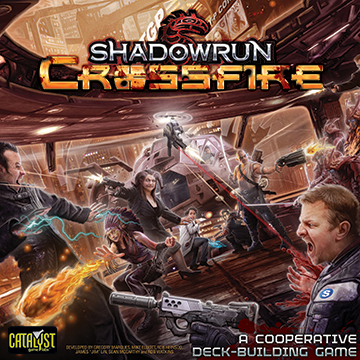
The world of Shadowrun is a complicated place. There aren’t many locales where you may have to contend with an angry troll, a bunch of pissed off hackers, a corrupt megacorporation, and a magic-wielding street thug who’d just as happily take your money dead or alive. All of these things are possible, and if you’re unlucky enough, it may all be in the same day. Shadowrun: Crossfire distills this huge world down into a collaborative deckbuilding game for players to explore.
This adaption of the highly successful tabletop RPG employs you as a member of a team tasked with a particular job each game. How you accomplish that job is partially up to you, as players are given a host of options over how to proceed through said mission. Immersionists will especially like that Crossfire not only takes you straight into such a flavorful world, but that how you proceed through it has a direct impact on your future missions. The game uses a semi-legacy style advancement, where you can not only keep your characters from game to game, but the more you play with your team of…let’s call them heroes…the better stats your characters get. Indeed, Crossfire offers many of the benefits of a tabletop without all of the extra requirements. Hey, it was one of the hits of this year’s Gen Con for a reason!
#1. Dead Of Winter
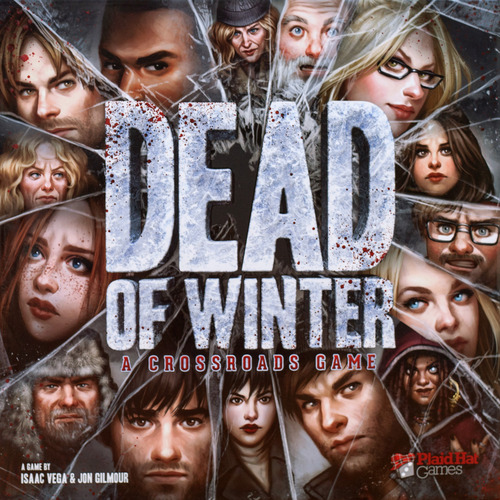 Few games made an impact on the scene this year like this largely co-op zombie survival game, and with good reason. Dead of Winter is a fantastic mix of flavor and mechanics of a snowy hellscape where you and the other players are just trying to make it through the day. In Dead of Winter, players control a small conclave of humans who are doing their best to survive in a cold, post-apocalyptic wasteland full of the living dead. Every game requires that players work towards both a collective goal (in order to everyone to win) while also secretly working towards their own objectives. Sometimes those missions are in concert with one another…and sometimes your mission is to ensure that everyone else fails.
Few games made an impact on the scene this year like this largely co-op zombie survival game, and with good reason. Dead of Winter is a fantastic mix of flavor and mechanics of a snowy hellscape where you and the other players are just trying to make it through the day. In Dead of Winter, players control a small conclave of humans who are doing their best to survive in a cold, post-apocalyptic wasteland full of the living dead. Every game requires that players work towards both a collective goal (in order to everyone to win) while also secretly working towards their own objectives. Sometimes those missions are in concert with one another…and sometimes your mission is to ensure that everyone else fails.
In this stark landscape things such as food, ammo, medicine, and other basic necessities are in short supply. Zombies, however, are in abundance. Players must scout out different locales in search for these goods and hope that they don’t attract too much attention. Journeying to and from those locations isn’t exactly safe either, as is depicted by a wide variety of event cards. And, as should be no surprise, not many of the events that can befall you are all that good.
Dead of Winter asks players to step into a zombie survival game that is blanketed with flavorful encounters, providing them with an experience – and a purpose – that extends beyond simply trying to kill and / or outlast a zombie horde. Instead, the narrative is what drives this game, as it guides you through a series of events where players have to make hard choices, both for their own team of characters, and for the good of all the players. And if that isn’t thematic, we’re not sure what is.
![]()
Be sure to check out the 2014 Top Five lists of the other archetypes!





